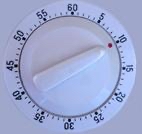
By Judy Kellar Fox, CG®
 A genealogical proof can be as simple and compact as a footnote. Yes! Believe it.
A genealogical proof can be as simple and compact as a footnote. Yes! Believe it.
The standards guide us, as always:
Standard 51 describes the need for our narrative and our source citations to show a thorough search in sources “competent genealogists would use,” favoring original sources and primary information;
Standard 52 reminds us that a conclusion answers a specified or implied question;
Standard 53 offers format options for presenting the proof; and
Standard 54 refers to the logical sequencing of the conclusion.[1]
BCG associate Donn Devine, CG, FNGS, found that his proof for the children of a couple fit nicely in a footnote, excerpted with highlights below. Thanks to Donn for permission to reprint the excerpt.[2]
Here’s how Donn's proof meets the standards:
Standard 51: The footnote correlates evidence from vital records (negative), estate records (particularly valuable as an original source providing primary information), censuses (which confirm the estate evidence), and city directories. The last sentence also refers to the article’s narrative, which establishes the family’s residences. All sources are as close to original records as possible.
Standard 52: The questions are explicit: “Who were the children of George and Mathilde (Bacharach) Falk?” and “Where were they born?”
Standard 53: This proof statement succinctly presents the evidence. One minor conflict, a birth-order reversal, is resolved by reference to a census and by a brief written explanation.
Standard 54: The source that names all the children in order is presented first, followed by the 1860 and 1870 censuses (which do not indicate kinship nor list yet-unborn children), and ending with the city directories and the 1880 census to clear up the conflicting information.
All that in a footnote! What more could we want?
[1] Genealogy Standards (Nashville, Tenn.: Ancestry.com, 2014), 31–34.
[2] Donn Devine, “The European Origin of George Falk (1823–1900), Brooklyn Watchmaker,”
The New York Genealogical and Biographical Record 144 (January 2013): 5–16, on pp. 12–13. Members of the New York Genealogical and Biographical Society can access the article
online or from the
NYG&B home page > eLibrary Collections >
The Record > Search “vol 144.
CG or Certified Genealogist is a service mark of the Board for Certification of Genealogists, used under license by Board-certified genealogists after periodic competency evaluation, and the board name is registered in the US Patent & Trademark Office.